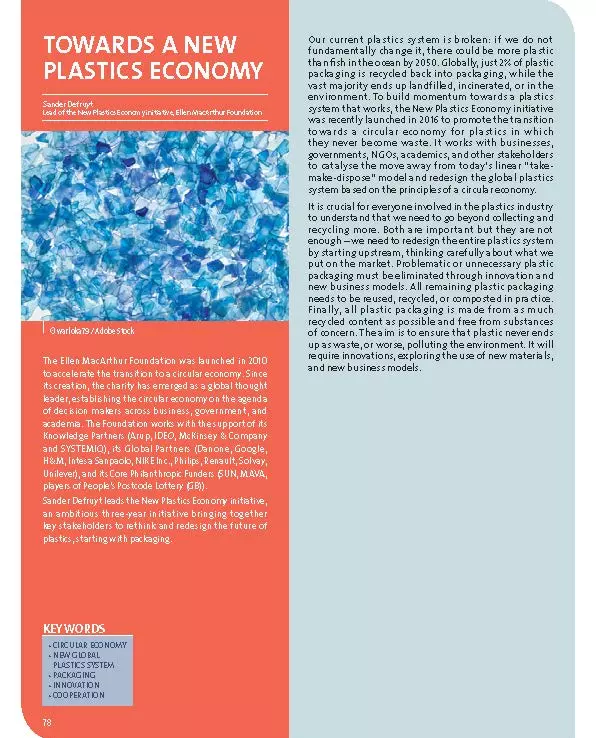By Sander Defruyt, Lead of the New Plastics Economy initiative, Ellen MacArthur Foundation
Our current plastics system is broken: if we do not fundamentally change it, there could be more plastic than fi sh in the ocean by 2050. Globally, just 2% of plastic packaging is recycled back into packaging, while the vast majority ends up landfilled, incinerated, or in the environment. To build momentum towards a plastics system that works, the New Plastics Economy initiative was recently launched in 2016 to promote the transition towards a circular economy for plastics in which they never become waste. It works with businesses, governments, NGOs, academics, and other stakeholders to catalyse the move away from today’s linear “takemake-dispose” model and redesign the global plastics system based on the principles of a circular economy.
It is crucial for everyone involved in the plastics industry to understand that we need to go beyond collecting and recycling more. Both are important but they are not enough – we need to redesign the entire plastics system by starting upstream, thinking carefully about what we put on the market. Problematic or unnecessary plastic packaging must be eliminated through innovation and new business models. All remaining plastic packaging needs to be reused, recycled, or composted in practice. Finally, all plastic packaging is made from as much recycled content as possible and free from substances of concern. The aim is to ensure that plastic never ends up as waste, or worse, polluting the environment. It will require innovations, exploring the use of new materials, and new business models.



